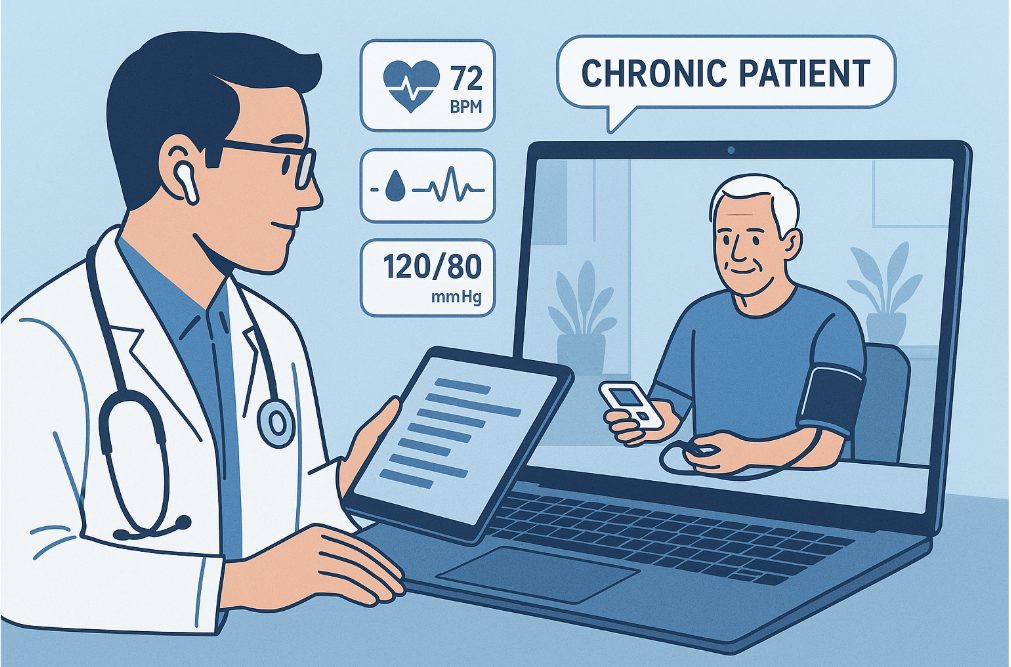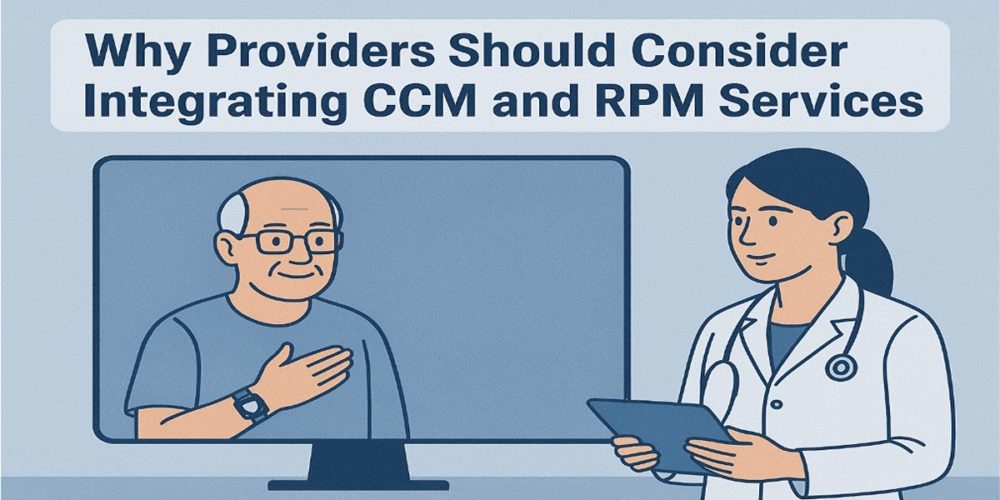As the healthcare landscape shifts toward value-based care and proactive patient management, integrating Chronic Care Management (CCM) and Remote Patient Monitoring (RPM) services is becoming increasingly essential for healthcare providers. The combination of these two services allows for comprehensive, continuous care that improves outcomes, boosts patient engagement, and creates new revenue streams for practices.
This article outlines the compelling reasons why providers should consider integrating CCM and RPM services into their care delivery model.
1. Rising Chronic Disease Burden Requires Continuous Care
Chronic conditions such as hypertension, diabetes, and heart disease are on the rise. According to the Centers for Disease Control and Prevention (CDC):
- 6 in 10 adults in the United States have a chronic disease
- 4 in 10 adults have two or more chronic conditions
Managing these conditions requires a structured, long-term approach that goes beyond episodic visits. Integrating CCM and RPM enables providers to monitor and manage patients more effectively between in-office appointments.
Source: CDC – Chronic Disease Overview

2. CCM and RPM: Complementary Services That Close the Care Loop
While CCM focuses on care coordination and patient follow-up for individuals with two or more chronic conditions, RPM provides real-time clinical data from patient devices such as blood pressure monitors or glucometers.
When used together:
- CCM provides the framework and ongoing communication
- RPM provides the data that drives timely clinical decisions
The integration of these services creates a proactive and data-informed care model, improving both clinical oversight and patient engagement.
3. Significant Financial Opportunities Through Medicare Reimbursement
Medicare has recognized the value of CCM and RPM services, offering separate reimbursement for each. As of the 2024 Physician Fee Schedule:
- CCM (CPT 99490): Approximately $62 per patient per month
- RPM (CPT 99457): Approximately $51 per patient per month
- Additional codes such as CPT 99453, 99454, and 99458 offer further reimbursement opportunities
Practices managing just 100 patients can generate over $10,000 in monthly recurring revenue by offering both services.
Source: CMS 2024 Physician Fee Schedule

4. Improved Patient Outcomes and Satisfaction
RPM enables providers to monitor vital signs and health indicators in real time, while CCM ensures that patients receive follow-ups, care plan reviews, and education. Together, these services lead to:
- Improved medication adherence
- Early detection of complications
- Reduction in emergency room visits and hospital readmissions
A study published in Telemedicine and e-Health in 2022 reported a 43% reduction in hospitalizations among patients enrolled in RPM programs, highlighting the clinical benefits of ongoing remote monitoring.
Source: Telemedicine and e-Health, 2022 Outcomes Study
5. Enhanced Workflow Efficiency for Clinical Teams
By integrating RPM into the CCM workflow, clinical teams can prioritize high-risk patients based on incoming data trends and alerts. This allows:
- Nurses and case managers to allocate time more effectively
- Physicians to make informed decisions using up-to-date patient data
- Administrative staff to streamline billing and documentation
Automation, templated notes, and integrated software platforms also reduce manual workload, improving both compliance and scalability.

6. Compliance and Documentation Alignment
Modern RPM platforms are HIPAA-compliant and offer integrations with electronic health record (EHR) systems. When paired with structured CCM documentation, providers can ensure:
- Accurate time tracking for billing
- Consistent care plan updates
- Readiness for CMS audits and quality reporting
The combination of automated logs and clinical oversight makes it easier to meet CMS billing criteria and avoid denials.
7. Building a Future-Ready, Scalable Practice
Integrating CCM and RPM positions healthcare providers for long-term success by aligning with national trends such as:
- The shift toward value-based care contracts
- Increased use of digital health and telemedicine
- Population health and preventive care models
- Predictive analytics and AI-driven care plans
Offering these services also increases a practice’s competitiveness in a rapidly evolving market.
Interested in Getting Started?
ProactiveWellness Care offers end-to-end solutions for providers seeking to implement or expand CCM and RPM programs. From devices and data capture to staffing and CMS-compliant reporting, our platform is built to support modern healthcare practices.
Contact now to learn more about our solutions



